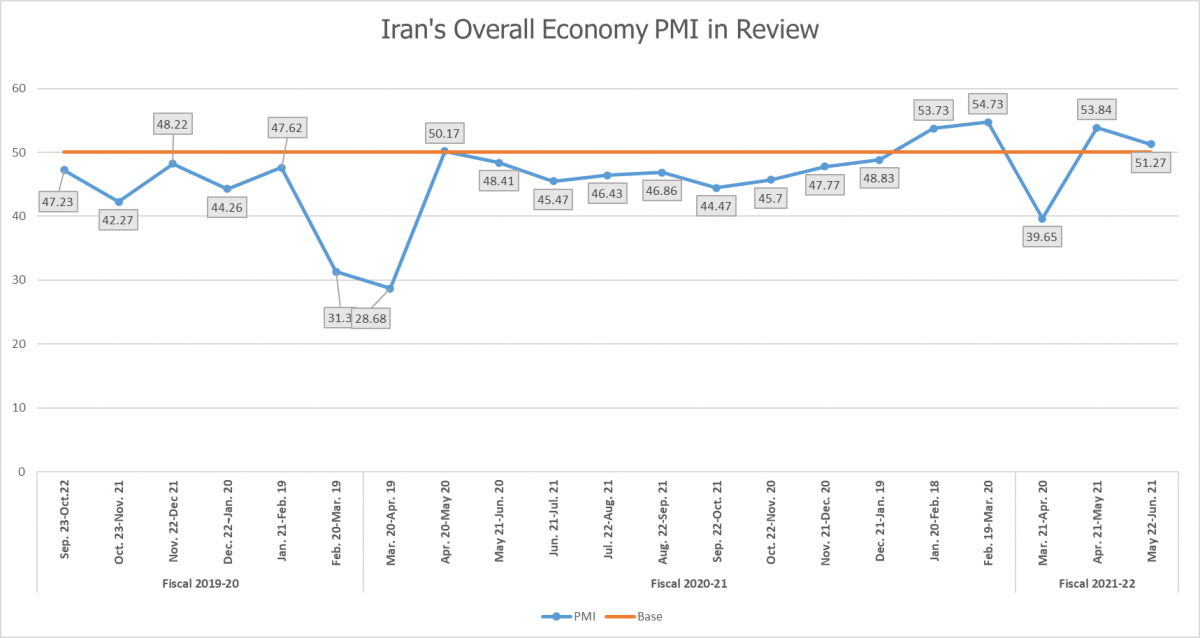Recurring blackouts and constraints in the supply of raw materials hampered business activity in Iran during the calendar month of Khordad (May 22 - June 21), according purchasing managers’ index (PMI) data released by the Iran Chamber of Commerce.
A report by the Statistics and Economic Analysis Center of the Iran Chamber of Commerce, Industries, Mines and Agriculture, the sponsor and coordinator of the survey, shows that given new headwinds the whole economy PMI fell to 51.27 from 53.84 in the previous month.
The headline PMI is a number from 0 to 100, such that over 50 shows an expansion of the economy when compared with the previous month. A PMI reading under 50 indicates contraction and a reading of 50 implies no change.
PMI is an index of the prevailing direction of economic trends, aiming to provide information about business conditions to company directors, analysts and purchasing managers.

According to the survey, while the economy is still growing, the PMI data indicates a fall in new orders, continued increases in the price of raw materials, and a drop in output likely related to recurring power cuts have hampered economic activity. The whole economy sub-index for output fell by over 6 points to 52.64. The whole economy sub-index for raw materials inventory fell to 45.73, its lowest rate in the past seven months.
While remaining in a growth phase, the manufacturing sector likewise saw a steep fall in economic activity. Manufacturing sector PMI fell nearly 9 points to 54.21. The sub-index for output fell to 53.64 from 68.68 in the previous month. Researchers at the Iran Chamber of Commerce blame the power cuts for interrupting output at manufacturing facilities.
The raw materials and machinery inventory sub-index declined to 47.52 from 53.59 a month earlier. Researchers at the Iran Chamber of Commerce cited import bottlenecks and an increase in the price of hard currency in Iran’s FX market as sources of pressure on raw materials inventories.
Despite the blackouts and supply constraints, businesses remain optimistic about the state of the economy. The whole economy sub-index for expectations of economic activity reached 63.78. Optimism is also reflected in the employment-related data. For the seventh straight month, the Iran’s manufacturing sector added jobs, with the employment sub-index at 55.93.
Whether this optimism is warranted depends on an end to the blackouts and no further deterioration in the availability and price of raw materials.